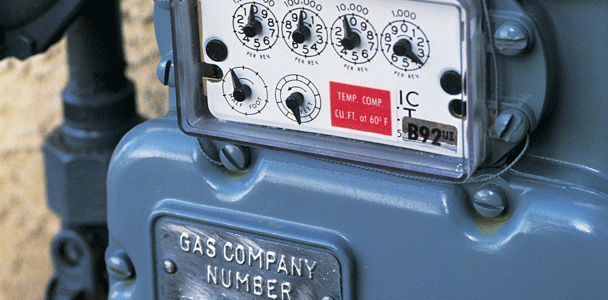
Choosing natural gas for your home offers many advantages and benefits that can help you save money, improve the environment and increase your comfort. Whether you currently are using heating oil, propane, or electricity, switching to natural gas is the natural choice for home heating, water heating, cooking, clothes drying , fireplaces, and outdoor living applications.
Natural gas is the right energy choice for today and tomorrow. It’s the cleanest burning fossil fuel with 45 percent less carbon dioxide (CO2) emissions than coal and 27 percent less than oil, making it the best fossil fuel source to reduce greenhouse gas emissions. Direct use of natural gas is also very efficient – 92 percent of natural gas produced is delivered to customers as useful energy.
Natural gas is used extensively in residential, commercial and industrial applications. It is the dominant energy used for home heating, with about 56 percent of American homes using natural gas. The use of natural gas is also rapidly increasing in electric power generation and cooling, and as a transportation fuel.
Natural gas is the cleanest burning fossil fuel, producing primarily carbon dioxide, water vapor and small amounts of nitrogen oxides. Other fossil fuels are coal and oil, which together with natural gas, account for about 88 percent of U.S. energy consumption.
Natural gas, like other forms of heat energy, is measured in British thermal units or Btu. One Btu is equivalent to the heat needed to raise the temperature of one pound of water by one degree Fahrenheit at atmosphere pressure.
A cubic foot of natural gas has about 1,027 Btu. Natural gas is normally sold from the wellhead in the production field to purchasers in standard volume measurements of thousands of cubic feet (Mcf). However, consumer bills are usually measured in heat content or therms. One therm is a unit of heating equal to 100,000 Btu.
Three segments of the natural gas industry are involved in delivering natural gas from the wellhead to the consumer. Production companies explore, drill and extract natural gas from the ground. Transmission companies operate the pipelines that link the gas fields to major consuming areas. Distribution companies are the local utilities that deliver natural gas to the customer. Ninety-eight percent of the natural gas consumed in the U.S. is produced in North America: 86 percent from the U.S. and 12 percent from Canada. The remaining 2 percent comes from overseas liquefied natural gas (LNG) sources.
About 46 percent of natural gas delivered to U.S. consumers is used in the industrial sector, providing energy for everything from mining minerals to processing food. Generating electricity consumes about 15 percent. Another 15 percent is used in the commercial market — for heating and cooling office buildings, hospitals and schools, and for cooking in restaurants. Most of the remaining amount — about 22 percent — is used in the residential market, providing energy for home heating, hot water, cooking, clothes drying and air conditioning.
Natural gas is delivered to American consumers through a 2.4 million-mile network of underground pipe. According to the National Transportation Safety Board, pipelines are the safest form of energy transportation – safer than transportation by truck or rail. And natural gas companies spend approximately $7 billion per year on safety programs.
Other advantages of natural gas:
- Lower energy costs – natural gas is the most economical option for homeowners.
- Natural gas heating systems cost less to maintain and have higher efficiencies than other systems.
- Increased comfort – natural gas provides warmer air (25 degrees warmer than air from an electric heat pump) and heats your home faster than electricity.
- With natural gas, you never run out of fuel or have to schedule a delivery.
- Many natural gas appliances will operate during a power outage.
